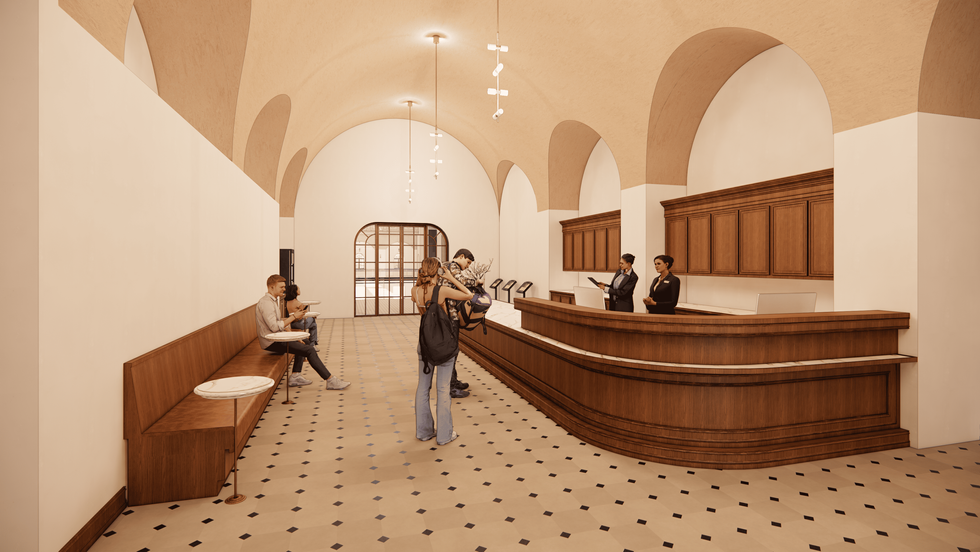CONCEPT PROCESS

Hotel Oderberger
International Student Hotel
Berlin, Germany
This project is an international hotel in Berlin Germany focused on providing luxurious short term and extended stay student housing. The hotel concept is my entry for NEWH's 2022 Green Voice Design Competition on an Urban Biophilic Hotel Project.
Square Footage
~ 20,000
Software Used
Revit, Enscape, InDesign, Illustrator
Duration
10 week
Research Presentation
With a hotel being such an expansive project encompassing multiple sectors of design, It can be overwhelming to start developing a concept. I began my design process by creating concept maps to discover my project's core ideas, amenities, and unique considerations. Through this process, I found out that I am very interested in student international travel and student housing and began brainstorming how I could merge these concepts with an urban biophilic hotel.

THESIS OVERVIEW
With all international travel halted during the pandemic, many are flocking to the airports to explore their dream destinations while they still can. Study abroad program have a similar story. Whether students were sent home early, had their study abroad plans canceled, or postponed, students are jumping at the gate to study across the globe. While studying abroad is very common, international student accommodations vary by college, program, and location with many staying in university dormitories, with host families, or in shared apartments with fellow students. Clearly there is a demand for international student housing with a lack of consistent accommodation options leading me to ask… Can a hotel successfully act as student housing for extended stays while still meeting the needs of short-term hostel guests?
LOCATION RESEARCH
Now that I had a concept, the next decision that could make or break my concept was the location. The competition rules left the location very open to any urban area with a population of at least 50,000. To help aid me in my location search, I create a Venn diagram of culturally significant foreign cities and then cities known for their academic institutions. This diagram then left me with 9 locations that I then added to a survey to see what locations people were interested in traveling to. My survey found that European cities were the most popular with all three cities (London, Berlin, Zurich) making the top 5 and 7/10 written in responses being other European cities. Berlin was chosen for its large student population, its plethora of universities, its extensive public transportation systems, its centralized location to other urban hubs, its rich cultural history, and with English being a prominant language.

DESIGN CONSIDERATIONS
Through my research, specifically my interview with an international student housing industry professional, I found that many students studying abroad travel to other nearby cities in their free time. I saw a need for consistent long-term housing at the student's primary city and a secondary need for short-term shelter during weekend trips. A hostel was designed into my hotel's main floor to provide these short-term accommodations while studio apartment-style hotel rooms located on the second and third floors are there for extended guests. I purposely separated the short-term and extended-stay guests sleeping spaces to provide privacy and security for the long-term students while providing communal social spaces like a lounge, pool, and lobby to promote connection between all guests. These common areas were designed into the hotel to promote conversations about their unique life paths and travel tips. This concept sees the space less as temporary housing, and more as a social living community perfect for creating special memories.
























